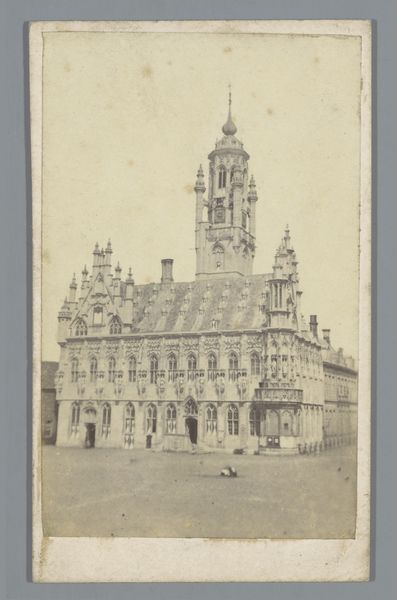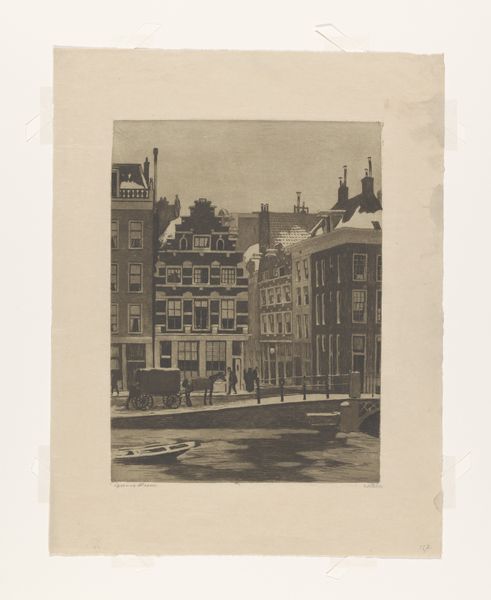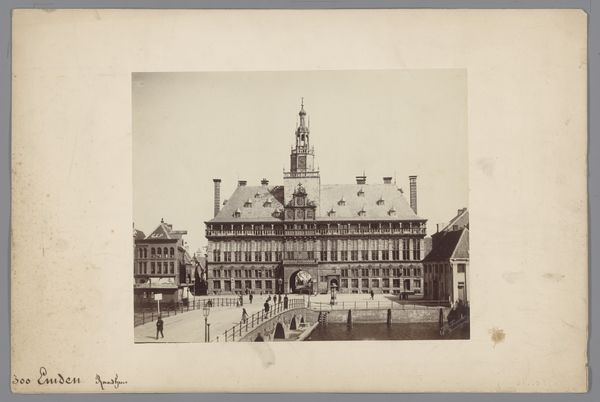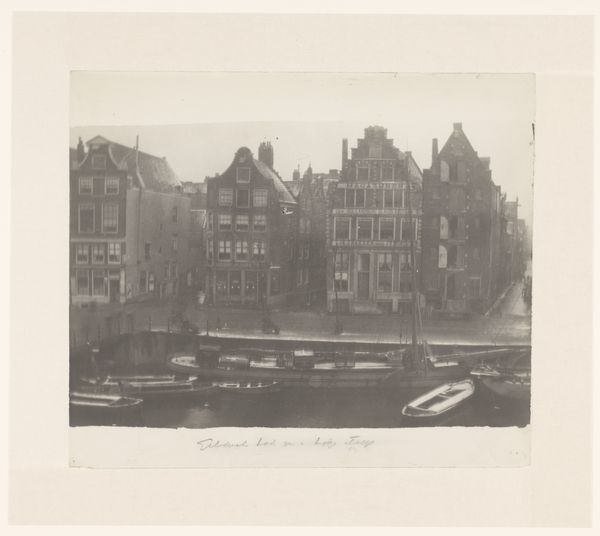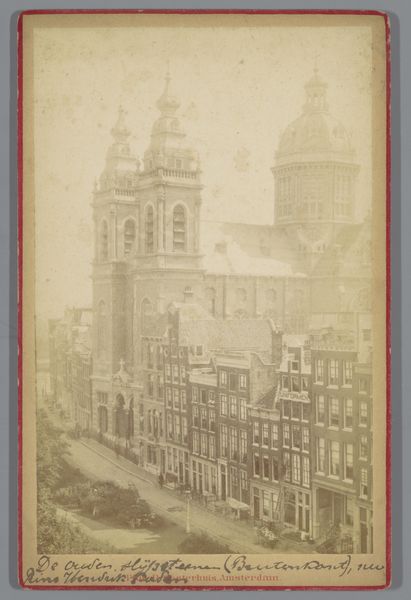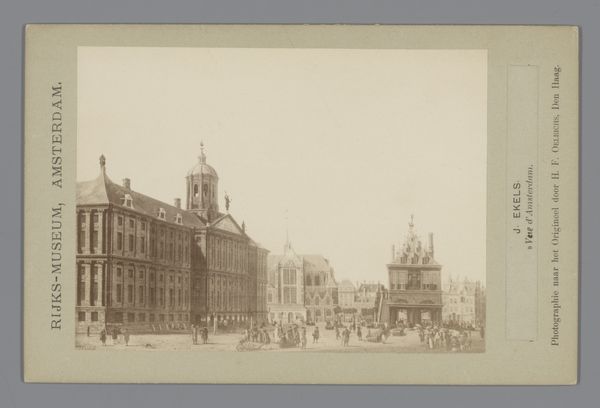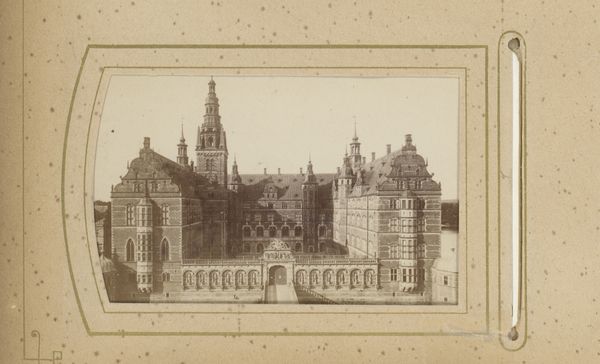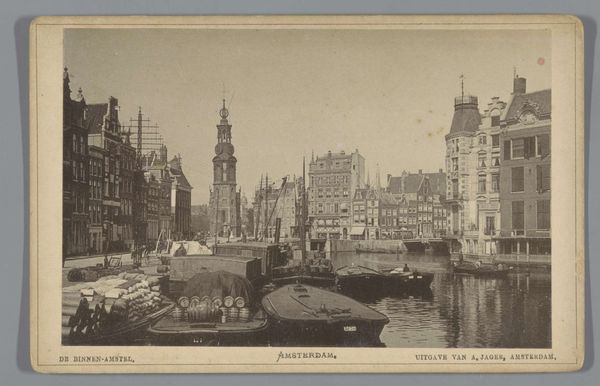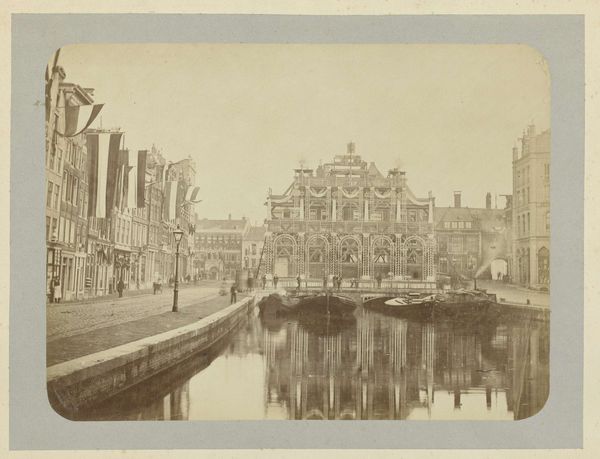
Grote Markt en St. Stevenskerk in Nijmegen, met rechts het Waaggebouw c. 1885 - 1890
0:00
0:00
print, photography, gelatin-silver-print
#
dutch-golden-age
# print
#
landscape
#
etching
#
photography
#
gelatin-silver-print
#
cityscape
#
realism
Dimensions: height 217 mm, width 275 mm
Copyright: Rijks Museum: Open Domain
Editor: This is "Grote Markt en St. Stevenskerk in Nijmegen, met rechts het Waaggebouw" by Wilhelm Ivens, likely a gelatin silver print from between 1885 and 1890. It feels incredibly documentary; almost clinical in its depiction of the town square. What catches your eye about it? Curator: What I see is not just a depiction, but a document of the materials of urban life and their organization at a specific historical moment. The labor involved in constructing these buildings, in quarrying the stone and firing the bricks, and even in producing the photographic print itself, is what commands my attention. Look at the detail captured through the process. What can that level of detail convey about its moment in history? Editor: That's interesting! So you're focusing on the physical reality represented, and also the labor of image making, not just its aesthetic qualities? The precision reminds me how much skill went into the trades during this period. Curator: Precisely. This isn’t just about seeing a picturesque cityscape, but thinking about the economic and social systems that enabled its production and the conditions under which that gelatin silver print was produced. Notice the apparent neutrality; it invites scrutiny. Does this seemingly straightforward approach belie a certain ideology or power dynamic? Editor: So the “realism” might be hiding something. Now that you mention it, who was photography serving in that time and how? It really pushes me to consider images of this period more critically! Curator: Exactly! Thinking about who had access to photographic technology and what purposes they used it for opens up fascinating avenues for inquiry. It’s less about the beauty, more about the cultural function. Editor: This makes me think about how photography was used as a tool to represent cities in the 19th century, building perceptions of them beyond individual experiences. Thanks! I definitely see this piece, and photographs in general, in a new light now.
Comments
No comments
Be the first to comment and join the conversation on the ultimate creative platform.
